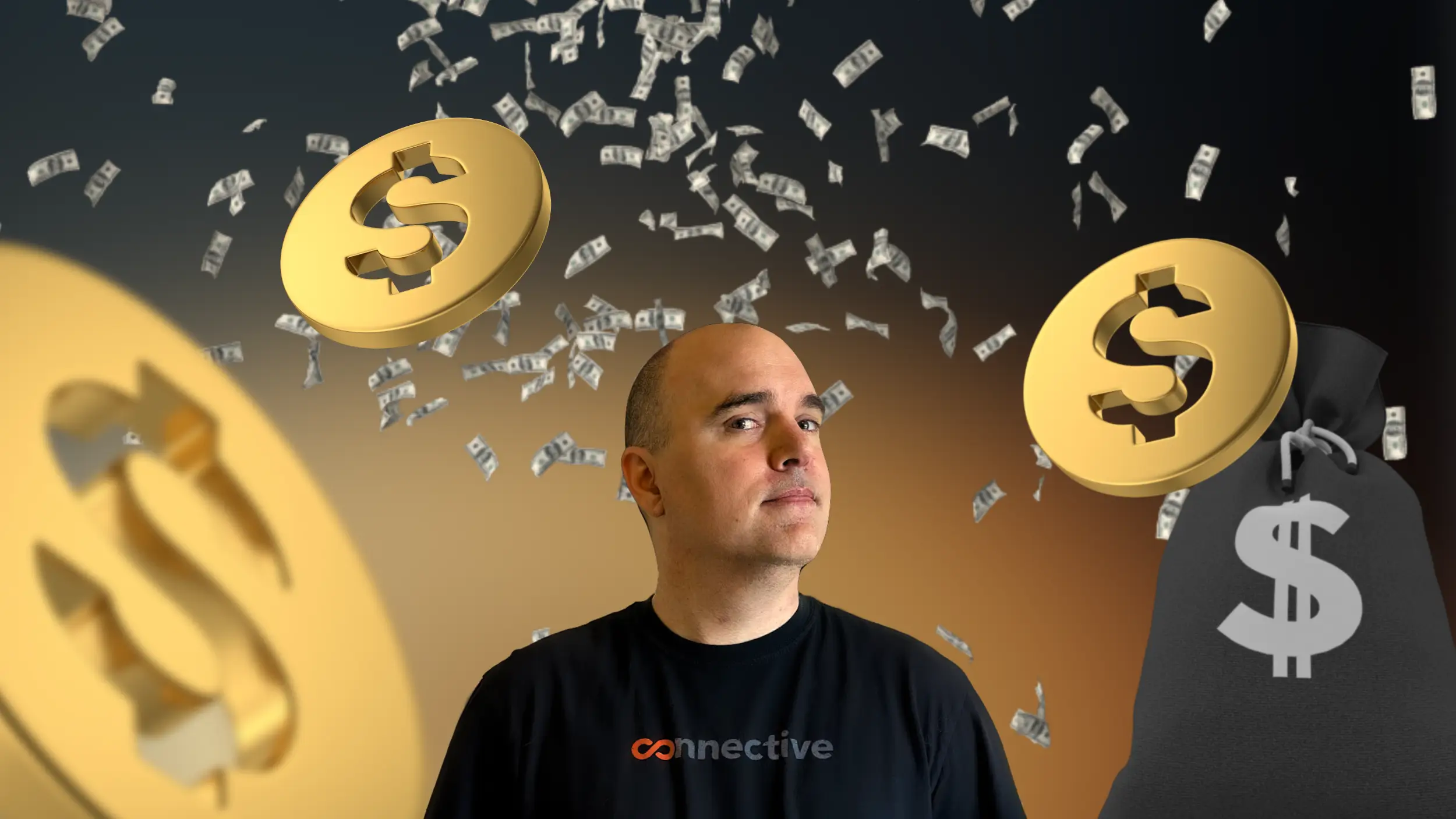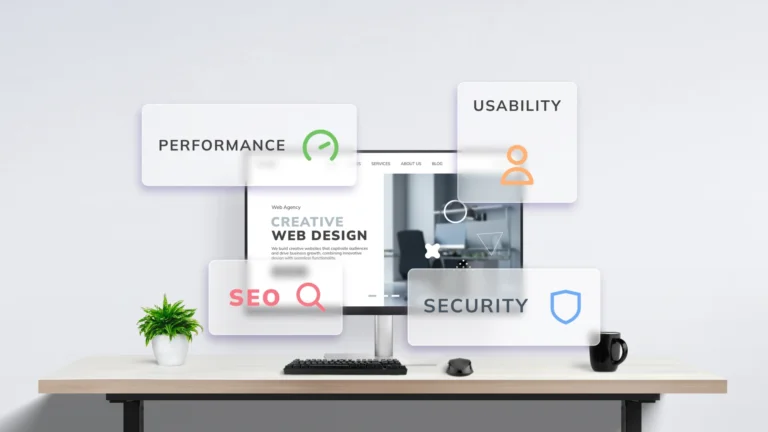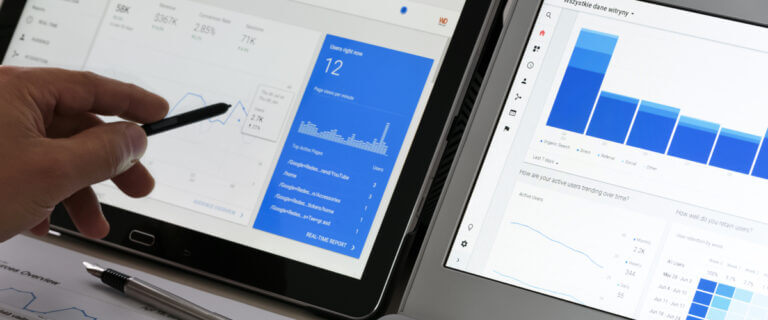Are you setting your prices based on guesswork or gut feeling? Let’s change that. Today, we’re diving into the nine key variables to help you confidently set fixed service prices. I consider the following when I set prices:
- Estimated Hours
- Hourly Revenue Target (HRT)
- Hard Costs
- Perceived Value
- Loss Leaders
- Service Level Required
- Market Rates
- Client Budgets and Expectations
- Value-Based Pricing
These elements are critical for a price that’s fair, competitive, and aligned with both your business goals and client expectations. After exploring these variables, we’ll talk about negotiation skills, the importance of contracts, and understanding pricing psychology.
Let’s dive into each and see how they can shape your pricing.
Estimated hours
The first variable to tackle is estimating the man-hours that would go into the project. At our marketing agency, we don’t rely on guesswork. Every team member uses a time tracking tool called “Toggl” to record every single minute spent on every single task. It’s a pain, but it gives us the necessary data to make informed decisions.
For example, historical data might show that a custom website design typically takes 150 hours. This becomes our baseline for similar new projects.
Don’t forget that your actual client can contribute pretty significantly to your time investment. A startup, for example, might need more hand-holding, adding an extra 20 hours for communication, while a tech-savvy client could shave off 10 hours.
Adjust accordingly.
Hourly revenue target (HRT)
Your Hourly Revenue Target, or HRT, is a crucial figure. The rate keeps your business healthy, your team paid, and your profits where they should be.
Let’s say you’re a team of four, each with a $75k salary, totaling $300,000. Your operating expenses are around $200,000, and you’re gunning for a 30% profit margin. That would put your annual revenue target at $650,000.
With a 75% utilization rate, which translates to 30 billable hours per team member per week, you have around 5,760 billable hours each year to play with.
When you divide your annual revenue target by the billable hours, the HRT comes to roughly $112.85. In this case, I’d just round to $115 per hour.
Operating at this rate ensures you’re meeting your targets. Revisit often.
Hard costs
When pricing your services, it’s important to consider hard costs, which are the direct expenses tied to your service. For a graphic designer, this might include stock photography, printing, and software fees. For example, stock photos at $200, printing for $300, and software charges of $100 per project total $600.
It’s tempting to absorb these costs into your service fee for simplicity, but this can be financially harmful. Instead, itemizing these costs can enhance client trust, provide accurate financial tracking, prevent underpricing, allow for pricing flexibility, and educate clients about the value they’re receiving.
While including hard costs in a single rate might seem easier, transparently listing them in your pricing is far more sustainable and lays a foundation for fair pricing.
Perceived value
Perceived Value reflects the client’s valuation of your service, shaped by your brand.
It’s vital here to articulate the distinct benefits and results your client will receive from your services. For instance, if your web design not only looks great but also significantly improves user experience and conversion rates, make this clear. Your pricing should then reflect this added value.
If clients appreciate the distinct advantages of your custom work, they’re often prepared to pay for it. However, if clients undervalue these benefits, it’s your cue to educate them, potentially leading to a price that mirrors the enhanced value.
This strategy ensures your pricing is fair and aligned with the client’s perception and the intrinsic value of your services.
Loss leader
The fifth variable is considering a Loss Leader approach. This tactic sets a lower initial price point, with the intention of guiding them toward more profitable services down the line.
Take a design company that may offer a cheap website. This can act as the ‘loss leader’ and serve as an entry point for clients. As the relationship develops, additional services can be introduced, such as maintenance or various marketing services, which are priced accordingly.
This strategy hinges on deeply understanding the customer’s journey. The key is to provide enough value in the loss leader to entice the client and then demonstrate the benefits and value of your full suite of services.
Loss leaders can create a pathway for customer acquisition that leads to more substantial, sustained revenue streams.
Service level required
The complexity and ease of delivering your services are crucial pricing factors. A straightforward logo design might be set at $2000, but if the project is particularly challenging or time-consuming—perhaps due to intricate client demands, multiple stakeholders, or a less straightforward revision process—the price should reflect that, potentially increasing substantially for a more comprehensive solution.
Conversely, consider a more modest price if a project is straightforward and can be completed with minimal fuss. This flexible pricing acknowledges not just the time and required but also the amount of brain damage involved in the project. It’s about ensuring that your pricing compensates for the entire scope of work, including the ease of execution, to maintain profitability and job satisfaction.
The importance of understanding market rates
Awareness of market rates is essential—it informs you of the going price for similar services within your industry and locale. This knowledge isn’t just about matching or undercutting prices; it’s about comprehending the competitive landscape to help set prices strategically and thus reflect your value.
For example, if you’re a consultant and research shows that the standard rate for high-quality services in your area is around $115 per hour, setting your HRT at this level positions you competitively. Alternatively, you may position yourself higher or lower, depending on how that aligns with your unique selling proposition.


Understanding market rates ensures your prices reflect your service’s quality and positions your company appropriately. This approach helps attract clients without undervaluing your work, allowing for a strategic market position highlighting your service’s value.
Researching and setting market rates
To effectively set your prices in line with market rates, consider the following:
Look for annual surveys or reports from industry associations, which often contain detailed pricing data.
Review competitors’ websites and promotional materials to see if they list their pricing or provide some indication of their rates.
Engage with peers through industry events, online forums, or social media groups to get insights into what others charge.
Sometimes, clients will share what they have paid for similar services, giving you a direct insight into current rates.
Some businesses specialize in providing market-rate information, which may come with a hefty price tag, but it can be valuable.
By following these steps, you can gain a comprehensive understanding of the market rates to help set prices effectively and competitively.
Client budgets and expectations
Navigating client budgets and expectations requires balancing their financial limits with the value of your work. Effective communication is key.
Having open discussions about budgets and goals from the beginning is important to understand their situation and objectives. Finding a pricing model that works for both parties promotes transparency and alignment.
Take a client with a $5,000 budget when your custom website packages start at $10,000. To align with their budget, you may need to pivot. Perhaps propose a website using a premium pre-designed theme instead of a custom design to streamline the process and reduce costs.
Explaining the differences between the $10,000 and $5,000 options helps the client understand the work involved and shows flexibility, fostering a mutually beneficial relationship.
Value-based pricing
Value-based pricing is a strategy that sets fees based on the benefits your services deliver to the customer. It goes beyond the services’ cost and focuses on the actual value added to the client’s business.
For instance, your comprehensive web design services, including advanced SEO and conversion rate optimization, can significantly boost the client’s business performance. You could position your service at $20,000 if you expect to increase the client’s revenue by $30,000.
The price is less than the additional revenue, making it a compelling investment for the client. By showcasing the investment’s return, you’re solidifying the client’s decision to engage with you, knowing that the expected increase in revenue justifies the price tag.
Initial assessment and base calculation
Now, let’s bring it all together and walk through the project pricing process. It begins with estimating the project’s duration and the resources required.
Imagine we’re tasked with creating a new website for a high-end firm. Here’s how you might approach it:
Estimated hours: The project will require around 133 hours based on our experience with similar projects in the past.
Hourly revenue target (HRT): Our Hourly Revenue Target is set to $115, ensuring it meets our business objectives while remaining competitive.
Hard costs: We anticipate hard costs amounting to approximately a grand to account for stock images, software, and plugins.
Our base calculation will be 133 hours at $115 per hour, which gives us $15,295.
Adding our hard costs of $1,000 to our base brings us to $16,295, giving us our foundation estimate.
Value-based considerations and final pricing
After establishing the foundation, we consider the project’s value-based aspects.
Our client puts a lot of stock in a sophisticated online presence, making our service highly valued.
They already have a marketing team, so this is very likely a one-off job. A top-of-the-line design, though, could significantly enhance the firm’s brand and attract high-net-worth clients.
Competitors charge around $18,000 for similar projects, and our client has shared a budget of $25k with very, very high expectations, which will likely require significant time investment.
Our base estimate was $16,295, and given the high perceived value, competitor rates, and the service level required, we move the quote to $20,000, which is under the client’s budget but well above our base.
By methodically considering each variable, we’ve arrived at a fair, competitive, and profitable price. This is the art and science of pricing strategy.
Negotiation skills in pricing
An often overlooked but crucial aspect of pricing is your negotiation skills. Effective negotiation can significantly impact your earnings, client relationships, and satisfaction. Enter every discussion prepared to negotiate with a clear understanding of your minimum acceptable rate and the flexibility you have in your pricing structure.
Suppose the client balks on the proposal. You can negotiate by adjusting the scope of work or offering different terms. Understand the client’s concerns and address them directly. Be prepared to negotiate in a way that speaks to their concerns without compromising your financial goals.
Negotiation is not just about lowering prices but finding mutually beneficial grounds. Come prepared by thinking through all potential solutions to ensure fair compensation for your work while maintaining positive client relationships.
The importance of contracts and agreements
A clear contract is essential. It protects both you and your client by ensuring mutual understanding of work scope, pricing, revisions, and other important terms. If done incorrectly, it can definitely cause problems with your estimates.
Include the specific services you’ll provide, the timeline, the payment schedule, and any terms related to scope changes or additional services. This protects you from scope creep and gives your clients a clear understanding of what they’re paying for.


In our web design example, a contract would detail the agreed-upon features, design elements, and functionalities of the website, along with the pricing. If the client later requests additional features, the contract should specify how these requests are handled, whether it’s an additional charge or a renegotiation of the project scope.
The psychology of pricing
Understanding the psychological factors influencing how clients perceive and react to pricing can give you an edge.
For instance, consider the concept of ‘anchoring.’ When you first present a price, this figure sets the stage for all subsequent negotiations and perceptions of value. If you quote a high price initially, even if it’s reduced later, the client’s perception of value remains high.
Another factor is perceived value. People pay more for services they perceive as premium. This is where branding can play a crucial role. You can justify higher prices by positioning your services as high-end. This is particularly relevant in our web design example, where high-end clients see a bespoke, high-quality website as a really valuable investment.
Conclusion: Mastering the art of pricing
Effective pricing is a strategic process that involves understanding your market, valuing your services, and communicating this value to your clients. Build a strategy that works for you, reflects your value, meets expectations, and drives profitability.
Review your pricing strategy regularly for alignment with your goals, market, and clients.
Articulate your benefits and unique aspects to justify pricing and align client expectations with the value you deliver.
Develop your negotiation skills to navigate pricing discussions effectively.
Use clear contracts to define scope of work, pricing, and terms, safeguarding you and your clients.
Pricing is an ongoing journey of learning, adapting, and refining. Apply these strategies to ensure your business thrives in a competitive marketplace. Embrace the challenge and demand fair recognition for your expertise, creativity, and hard work.
See ya!














